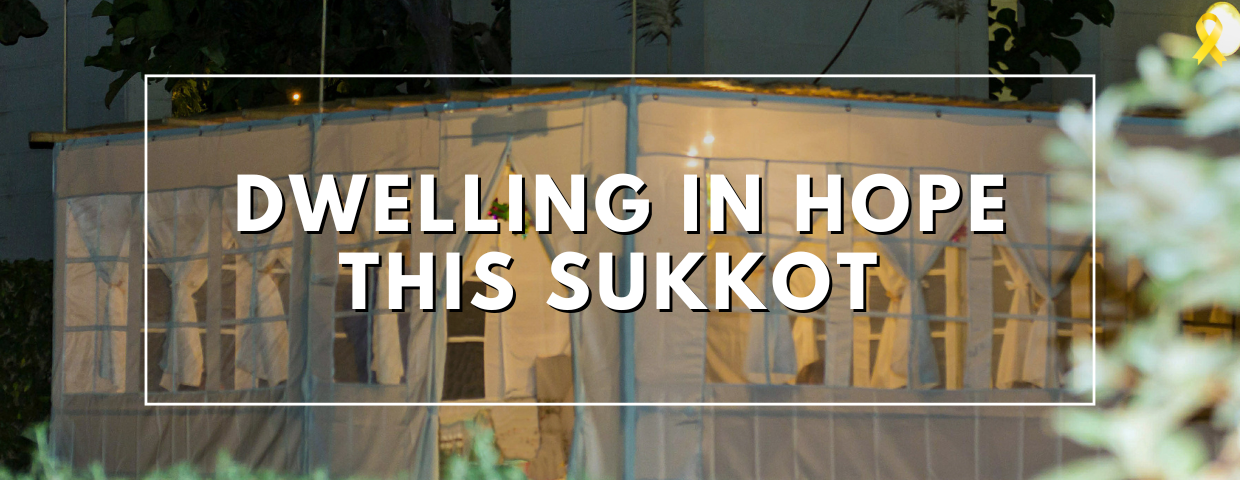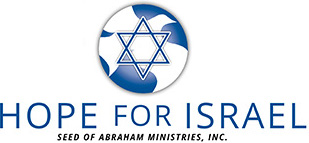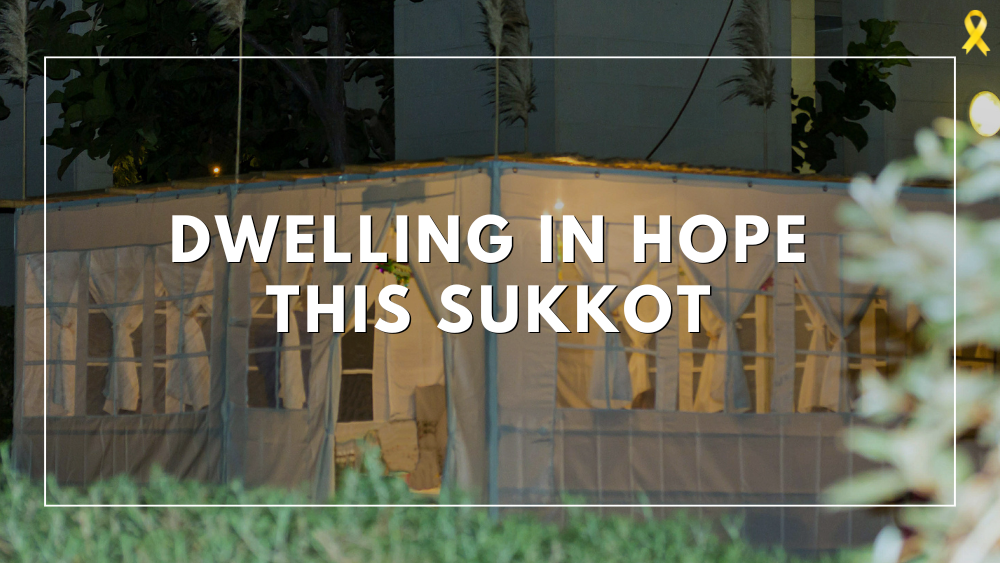
Across Israel, the sound of hammers building sukkot fills the air, and the markets overflow with palm branches, myrtle, willows, and fragrant etrogim. Families prepare to celebrate Sukkot, the weeklong festival of joy, light, and remembrance of God’s provision in the wilderness. Yet this year, every sukkah carries a shadow. As we near the two-year anniversary of the October 7th massacre, the urgency to bring the hostages home presses heavily on our hearts. We also remember the missing loved ones who will never return, and we hold close in prayer the brave men and women currently serving on the front lines. Their absence and sacrifice are felt in every meal shared, every prayer whispered, every star glimpsed through the branches above.
Even in sorrow, Sukkot teaches us to dwell in hope. At its heart, the Feast of Tabernacles is about remembering that God Himself is our shelter. The fragile sukkah, built with simple walls and a roof of branches through which the stars can be seen, is a reminder that our security is not in stone fortresses but in the Lord who dwells with us.
Sukkot is one of the most vibrant and joyful festivals on the Jewish calendar. It commemorates Israel’s journey through the wilderness, when the people lived in temporary shelters and relied fully on God’s daily provision. Families and communities across Israel build their sukkot, temporary booths, adorned with colorful decorations, palm branches, pomegranates, citrus fruits, and lights. For seven days, meals are shared under the leafy roofs, and some even sleep within them, embracing the command to “dwell in booths.”
One of the central traditions is the waving of the Four Species: the lulav (palm branch), hadas (myrtle), aravah (willow), and etrog (citron). Together, these symbolize unity, different kinds of people bound together as one nation before God. This year, the symbolism is especially poignant. Israel’s strength lies in standing together as one people, holding fast to faith, unity, and resilience even in the face of ongoing trials.
The holiday is also known as “the Season of Our Joy.” After the solemnity of Rosh Hashanah and the repentance of Yom Kippur, Sukkot bursts forth in rejoicing. In the days of the Temple, water was drawn with great ceremony from the Pool of Siloam and poured out at the altar amid music and dancing, a ritual known as Simchat Beit HaShoeva, the Rejoicing of the Water-Drawing. Even today, Jerusalem and cities across Israel light up at night with festive gatherings, singing, and dancing in remembrance of that celebration.
Sukkot is also known as the Feast of Ingathering (Exodus 23:16), when Israel celebrated the final harvest of the year by bringing in the produce of the land. The prophets looked ahead to a future fulfillment of this feast, declaring that all nations would come up to Jerusalem to worship the Lord during Sukkot (Zechariah 14:16). The book of Revelation echoes this vision: John sees a great multitude from every nation, tribe, people, and language standing before the throne and before the Lamb (Revelation 7:9–10). He later hears the promise, “Behold, the dwelling place of God is with man” (Revelation 21:3), pointing to the day when God Himself will tabernacle among His people.
This year, as families gather in their sukkot to share meals, to wave the lulav and etrog, and to rejoice in God’s goodness, we cannot separate our joy from our longing. We cry out for peace, for healing, and for the safe return of every one of the hostages. The sukkah itself, open, vulnerable, yet filled with light and beauty, becomes a symbol of Israel’s condition: fragile, yet protected by the hand of the Almighty.
Let this Sukkot not only renew our hope but also call us to action. As you sit in your sukkah, join us in lifting prayers for the hostages, for Israel, and for the day when God Himself will dwell among us in fullness. May the stars shining through the branches remind us that His promises are eternal and His dwelling with His people is sure.


One Comment on “Dwelling in Hope this Sukkot”
Moran, last week I was so moved by your article about Yom Kipper. “…how will I observe Yom Kippur? I will fast, read Scripture, and confess my sins before the Lord. I will join with the people of Israel in humbling myself before God.” The last couple of days I followed that observance of Yom Kippur according to Israel’s local time, lifting all of Israel, Israeli leaders and the IDF in prayer. I will and my family will continue to pray and support Israel.
Earlier today a couple of neighbors knocked at my door thanking me for flying my Israeli flags and told me of a local church that they had seen with many (100’s) Israeli flags displayed on their property. The neighbor asked me if I knew why they had all those Israeli flags. I was over joyed to hear of that a Christian church has displayed that support for Israel and mentioned that it was probably for support Israel prior to this coming October 7, 2025, the anniversary of the horrific attack on Israel. I was glad to be able to share with them and to hear of support of Israel.
Every chance I get to share about Israel, I continue to do so. We ARE PRAYING!